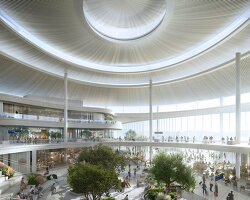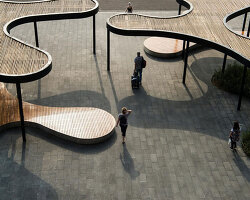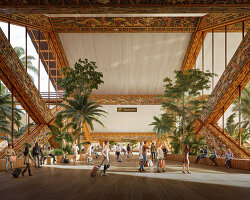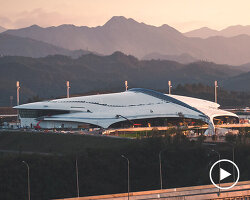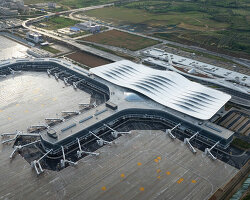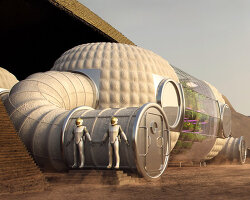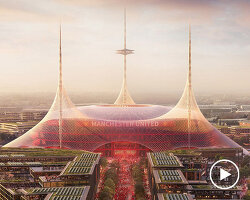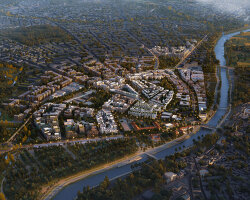KEEP UP WITH OUR DAILY AND WEEKLY NEWSLETTERS
designboom steps inside the al-mujadilah center and mosque for women by diller scofidio + renfro in the heart of doha's education city.
k-studio has joined forces with with grimshaw, haptic, arup, leslie jones, triagonal and plan A to design the expansion of the athens international airport (AIA).
the nordic pavilion, built from forest-managed wood, champions circular design, while saudi arabia blends computational design with vernacular cooling techniques.
designboom visits portlantis ahead of its public opening to learn more about the heritage and future of the port of rotterdam.
connections: +1350

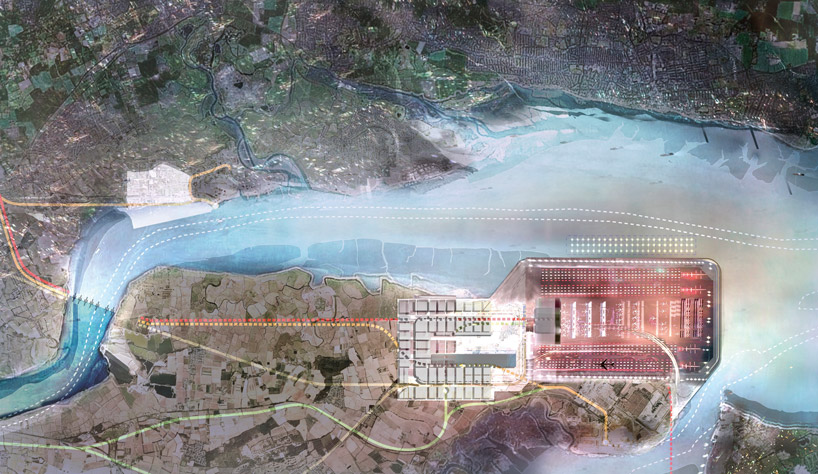 site plan of hub and networks image © foster + partners
site plan of hub and networks image © foster + partners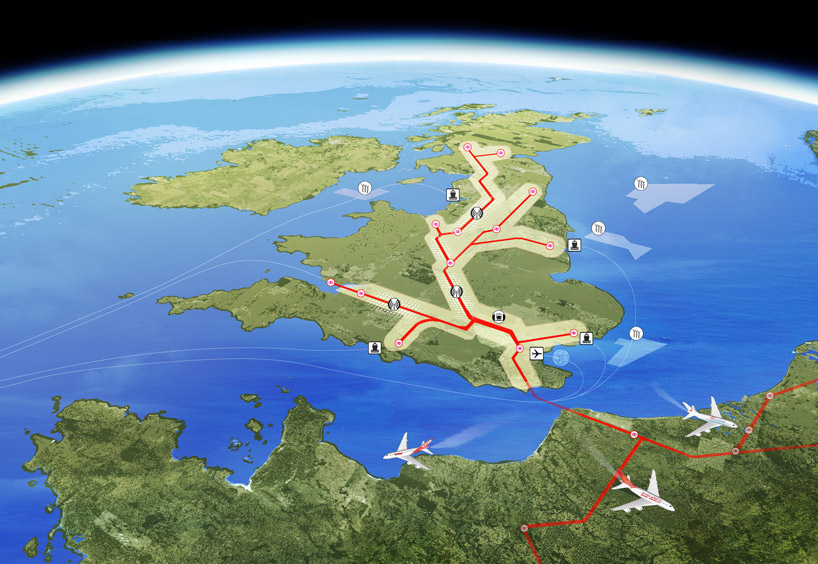 the spine connects UK’s existing ports and future rail networks image © foster + partners
the spine connects UK’s existing ports and future rail networks image © foster + partners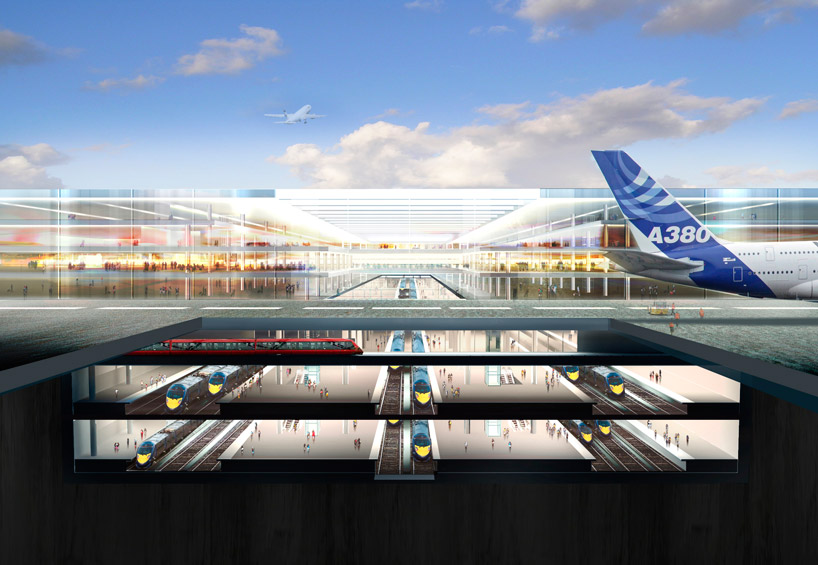 new international rail station directly linked into the hub airport image © foster + partners
new international rail station directly linked into the hub airport image © foster + partners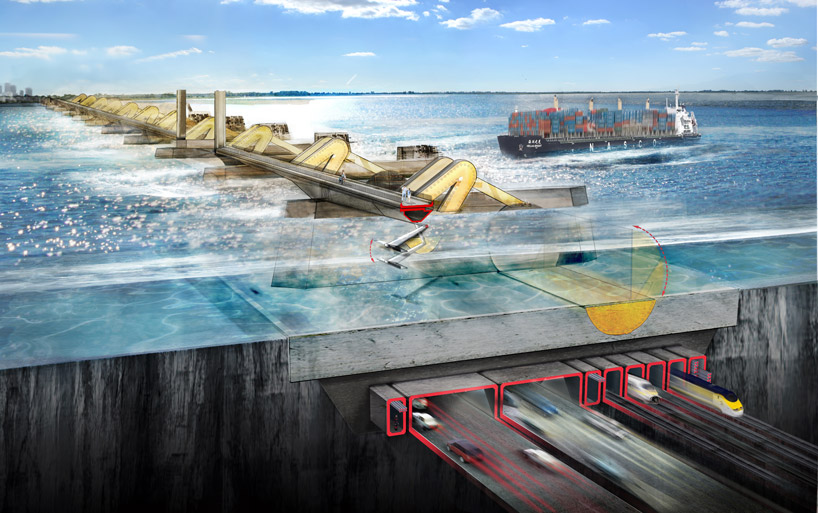 new thames barrier crossing integrating connection, protection and generation image © foster + partners
new thames barrier crossing integrating connection, protection and generation image © foster + partners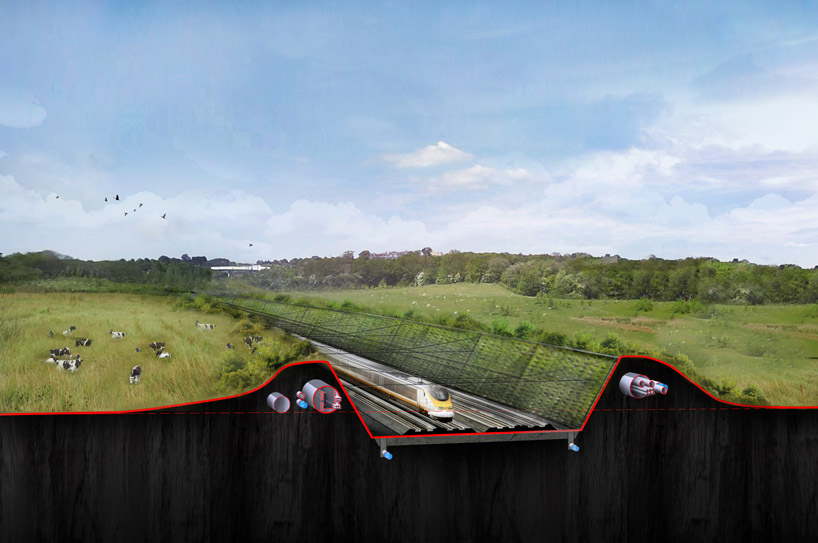 integrated utilities within the lines using landscaping in the tradition of the 18th century ha-ha image © foster + partners
integrated utilities within the lines using landscaping in the tradition of the 18th century ha-ha image © foster + partners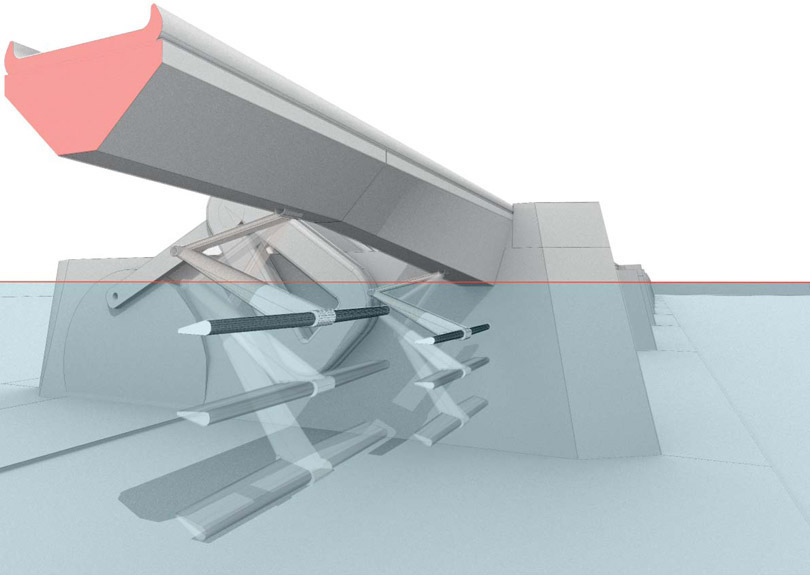 integration of hydropower generators within the new flood barrierimage © foster + partners
integration of hydropower generators within the new flood barrierimage © foster + partners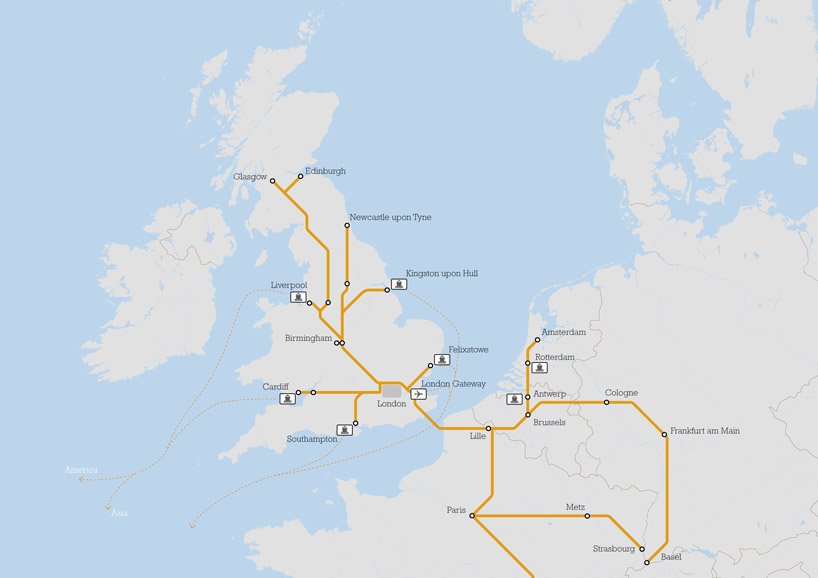 ports and freight routes via orbital rail and logistics matriximage © foster + partners
ports and freight routes via orbital rail and logistics matriximage © foster + partners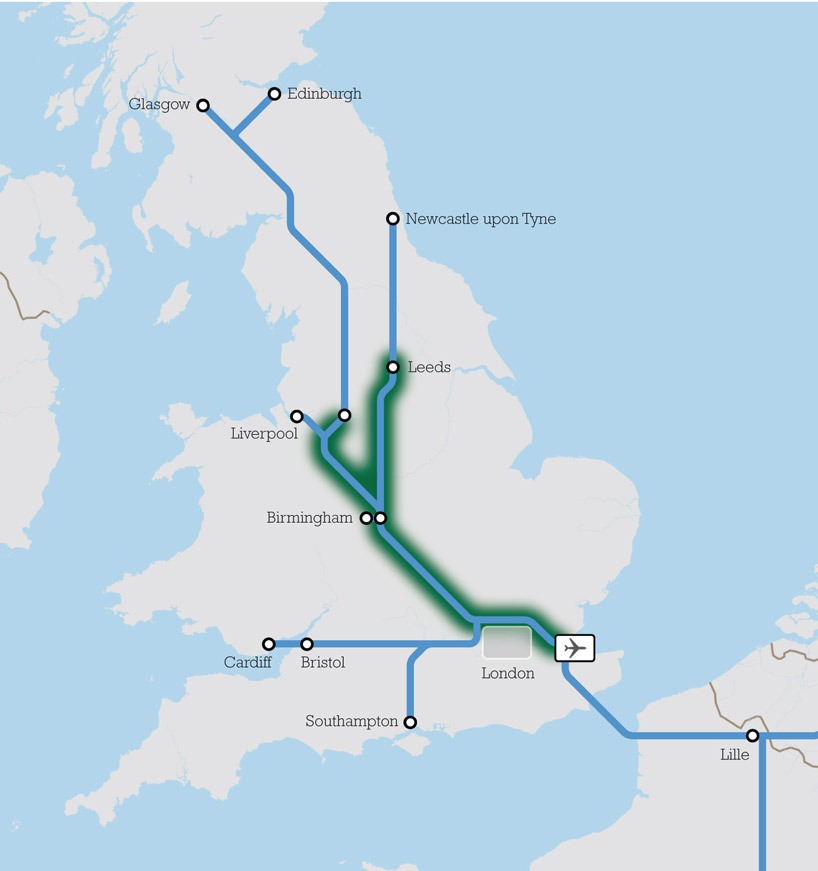 infrastructure network that runs from north to south image © foster + partners
infrastructure network that runs from north to south image © foster + partners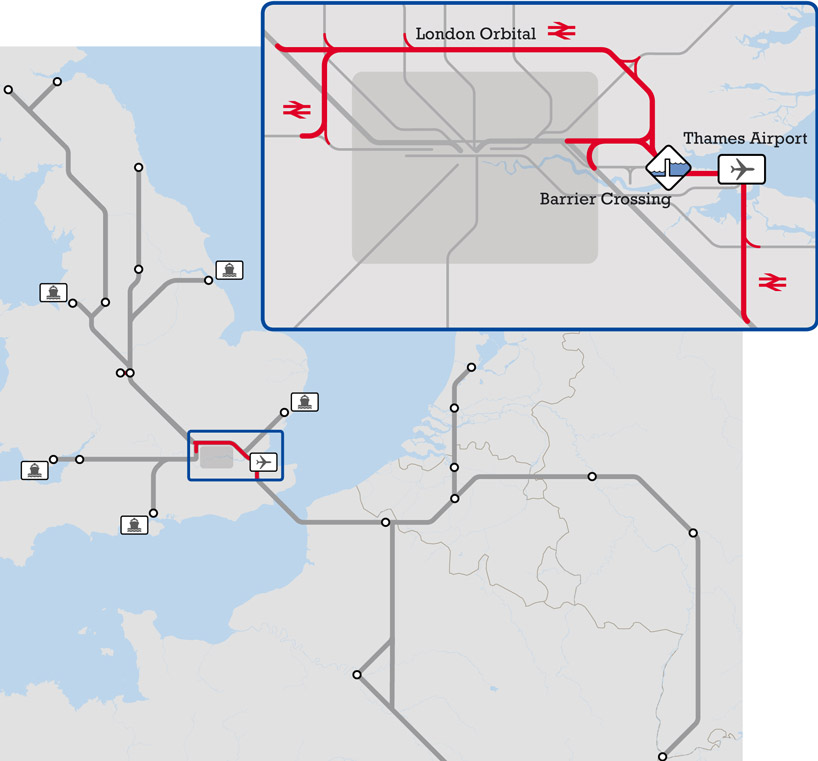 main components of the thames hub image © foster + partners
main components of the thames hub image © foster + partners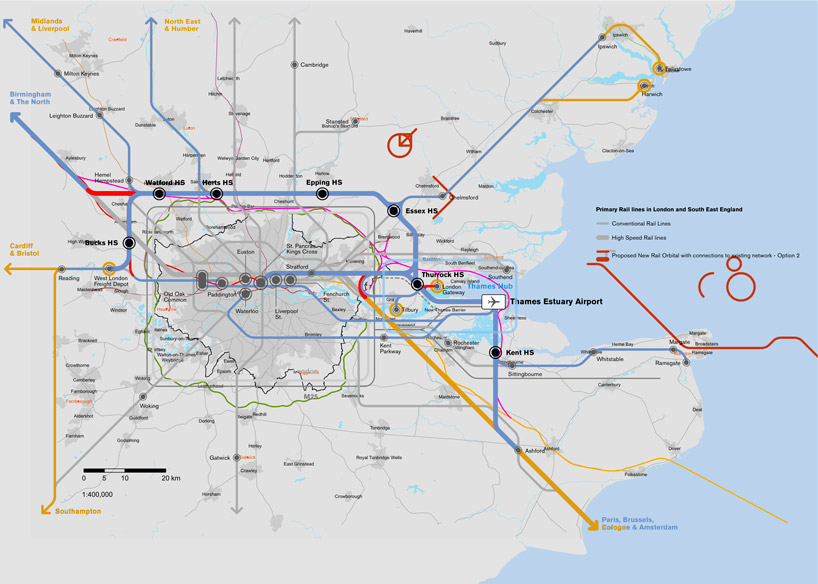 new london orbital rail linking high speed and radial rail routes image © foster + partners
new london orbital rail linking high speed and radial rail routes image © foster + partners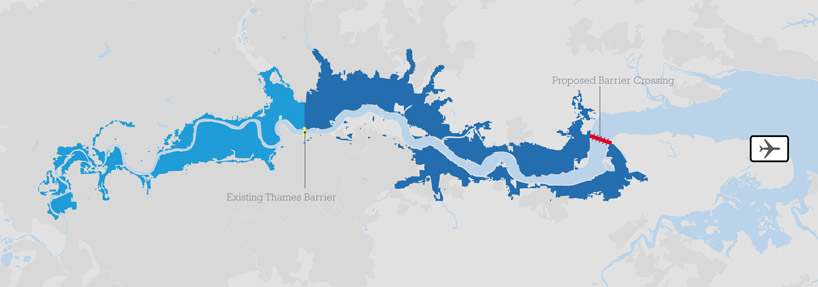 existing and proposed flood protected landimage © foster + partners
existing and proposed flood protected landimage © foster + partners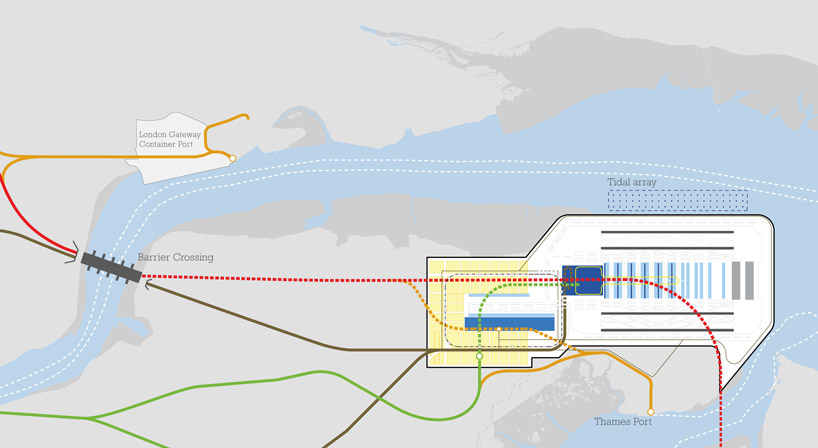 proposed hub airport and ground accessimage © foster + partners
proposed hub airport and ground accessimage © foster + partners